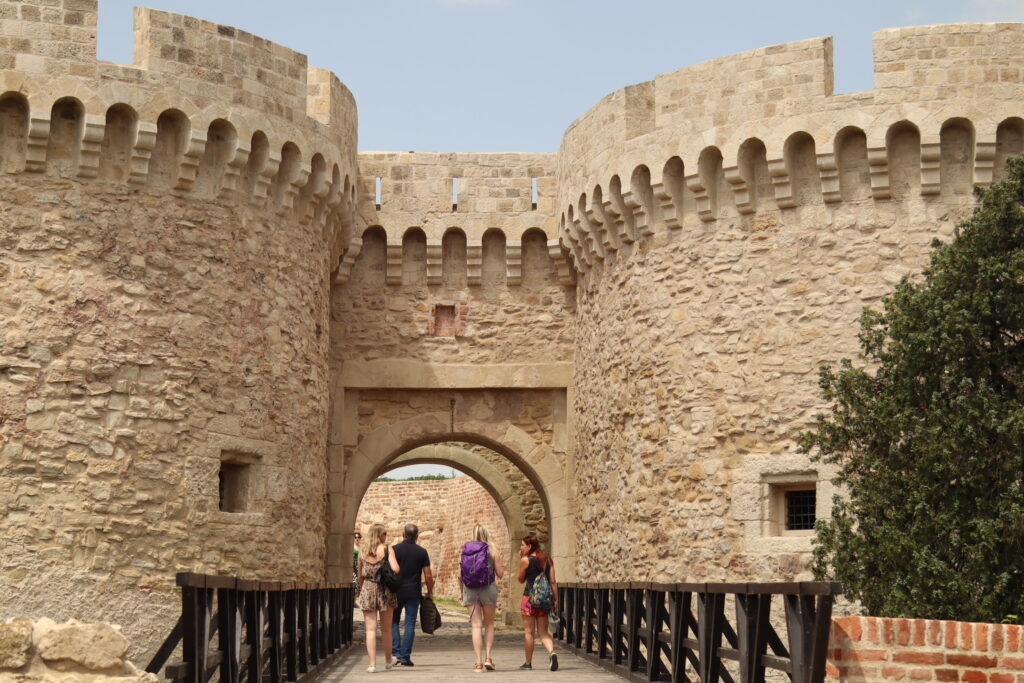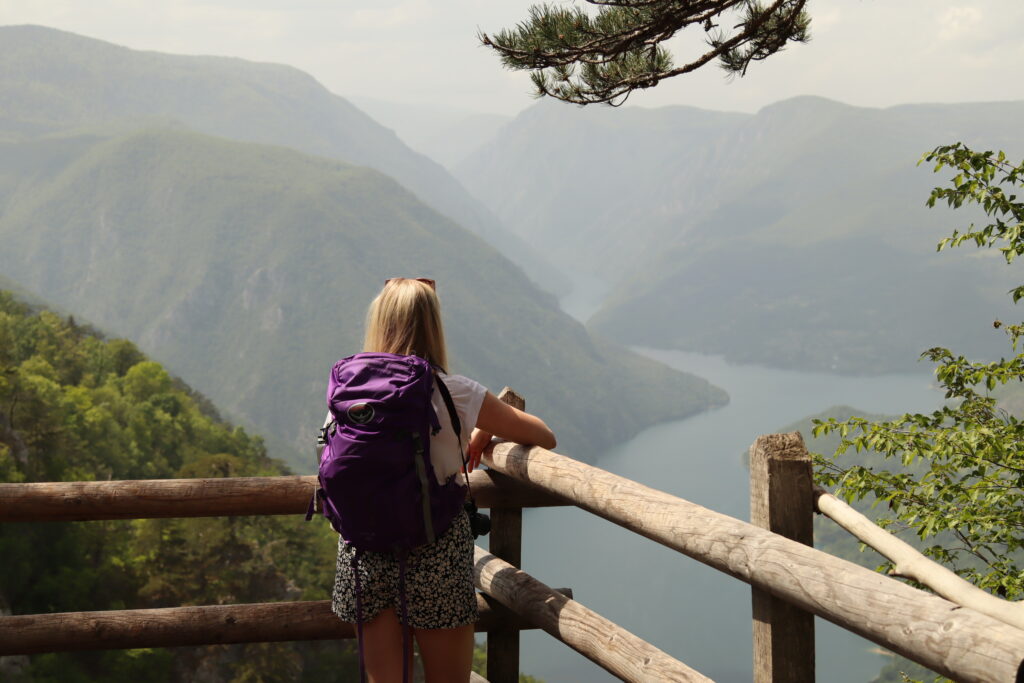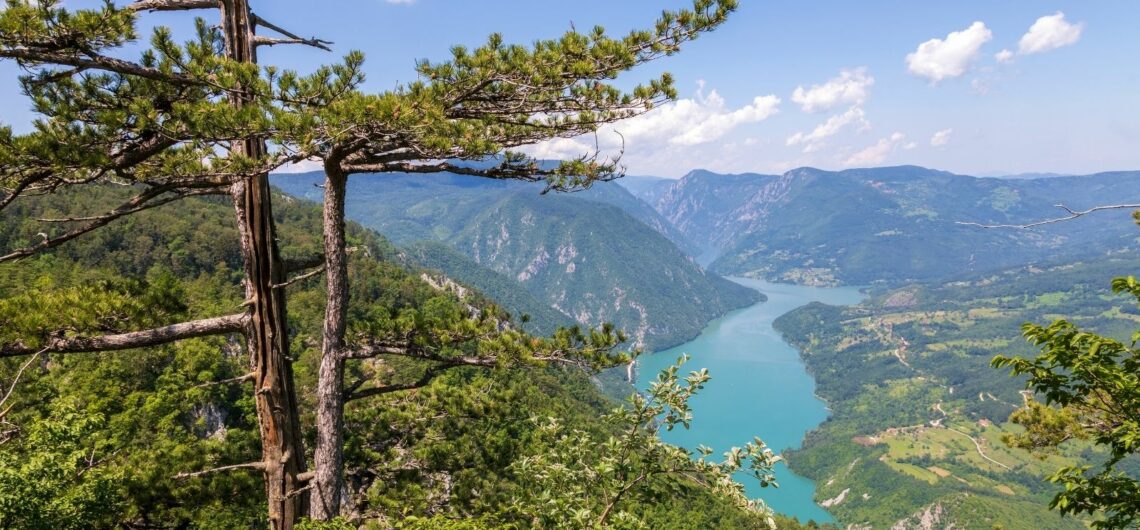Like many Balkan states, Serbia is in its infancy as a tourism destination but it’s slowly making its way onto more people’s radar. In 2023, it saw its biggest growth in tourism yet, helped in part by budget flights to Belgrade, the capital.
With that being said, we thought we’d help you get to know Serbia better with a bit of trivia. For instance, did you know it has a desert? Or that rakija isn’t just for drinking?
Read on for more interesting facts about Serbia.
1. Belgrade is very, very old
Belgrade (aka Beograd, meaning ‘white city’) is the oldest continuously inhabited city in the world, dating back to at least 5700 BC when the Vinča culture, one of Europe’s largest and oldest prehistoric cultures, evolved there.
Due to its location on the rivers Sava and Danube, Belgrade has seen its fair share of unwanted visitors over the centuries and it has been bombed and rebuilt many times. At the Belgrade fortress, you will literally see layers of history in the stone walls where the Romans, Ottomans and Austro-Hungarians have each rebuilt parts of the structure.

2. Most of Serbia’s history took shape in kafanas
Kafanas (bistros) were around before London invented tea rooms or Paris invented cafes. From the first constitution and parliament sitting to sports clubs and theatre productions, kafanas are the cradle of Serbian culture and politics – and have been since the very first one opened in the 16th century.
On Skadarlija, Belgrade’s bohemian quarter, stand two of the city’s oldest operating kafanas – Dva jelena (Two Deers) or Tri šešira (Three Hats), which was first opened 150 years ago. Despite them becoming a tourist attraction, a large proportion of the clientele are locals and you can be sure to still find that authentic Serbian kafana experience.
3. It’s home to Europe’s largest desert
Deliblatska Peščara – aka Deliblatska sands – is the largest sandy terrain in Europe at 300 km² (74,130 acres). Located in the northeast of the country between the river Danube and the southwestern slopes of the Carpathian Mountains, it was once part of a prehistoric desert and formed by the withdrawal of the Pannonian Sea.
Some consider the Oltenian Sahara in Romania Europe’s largest desert at 810 km² (200,000 acres) but it’s not technically a desert of natural causes. This vast stretch of land in between the city of Calafat and the town of Dăbuleni was once forests and lakes. During the Soviet era, huge swathes of the land was deforested and drained to make way for farmland, causing the desertification of the area.
Related:
- 10 traditional Balkan foods you have to try when you visit
- The best things to do in Shkodër, Albania
- The Undiscovered guide to Belgrade
4. It has one of Europe’s best preserved forests
Tara National Park in the Dinaric Alps is considered one of Europe’s best preserved and highest quality forests, named after the Tara mountain. It’s very popular during the summer with locals who come for holidays.
Home to more than 1,000 species of plants, the star of the show is the Serbian spruce which is believed to have survived the ice age. The park is home to various large mammal species, including brown bears, wolves and lynx.
From Banjska Stena, the famous viewpoint in the park, you can gaze across the Drina River to Bosnia-Herzegovina and even hear the call to prayer from the mosques over there.

5. Warm hospitality is a huge part of Serbian culture
Having been invaded many times over the centuries, Serbian people have a unique inherent grit and sense of national pride. But at the same time, Serbian people are some of the most generous and warm people you could ever hope to meet.
In Serbia and other parts of the Balkans, your home belongs to God and the guest before it belongs to you. Therefore, a Serbian will never rush you out of the door if you visit and they will always have something to feed and water you with. And if your guests manage to eat everything you’ve put in front of them, you haven’t been a very good host, so expect to be well fed wherever you go.
When you’re out exploring, it’s likely you’ll be invited in for a rakia, especially in more remote rural areas where people don’t see many visitors and it’s a huge novelty. That brings us nicely onto our next point…
6. Rakija isn’t just for sipping
Rakija, a Balkan brandy often made with fermented fruits such as plums, is the lifeblood of Serbia. But it isn’t just for drinking.
Rakija can also be used as medicine, a spot treatment, massage oil to ease aches and pains, a cold remedy, and everything in between. Got a fever? Go to bed with rakija-soaked flannels on your feet. Tuesday morning? Drink rakija. Leg hanging off? Rakija. You get the point.
Feeling inspired? Check out our Serbia adventure holiday or get in touch to make an inquiry.


Comments